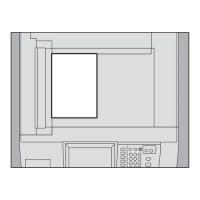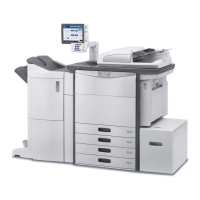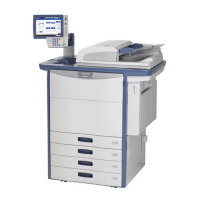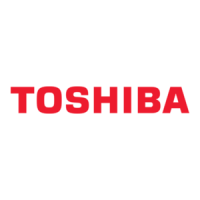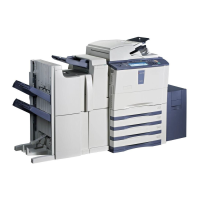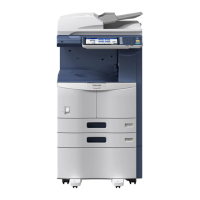e-STUDIO555/655/755/855 © 2009 - 2011 TOSHIBA TEC CORPORATION All rights reserved
SCANNING SECTION
6 - 2
6.2 Construction
The construction and purpose of the scanning system are described in this section.
1. Original glass
This is a glass for placing original. The light from the exposure lamp (EXP) is irradiated to the
original through this glass.
The ADF original glass is used when original is read with the Automatic Document Feeder. Original
is transported on the ADF original glass by the Automatic Document Feeder, and the transported
original is read under the ADF original glass by the carriage.
Do not use such solvents as alcohol when cleaning the surface of the ADF original glass, because it
is coated so as not to be scratched by originals.
2. Carriage-1
The carriage-1 consists of the exposure lamp (EXP), lamp inverter board (INV-EXP), reflector,
mirror-1, etc. It is driven by the scan motor (M1) and scans the original on the glass.
- Exposure lamp (EXP)
This lamp is the light source to irradiate the original on the glass (one 29W Xenon lamp).
- Lamp inverter board (INV-EXP)
This inverter controls lighting of the Xenon lamp.
- Reflector
This is a reflecting plate to efficiently lead the light from the exposure lamp (EXP) to the surface
of the original on the glass.
- Mirror-1
This mirror leads the light reflected from the original to the mirror-2 described later.
Fig. 6-2
3. Carriage-2
The carriage-2 consists of mirror-2, mirror-3, etc. and leads the reflected light from the mirror-1
through mirrors-2 and -3 to the lens.
This carriage-2 is also driven by the scan motor (M1) as in the same manner of the carriage-1, at
half the scanning speed of carriage-1 (the scanning distance is also half of carriage-1).
4. Lens unit
The light reflected from the mirror-3 is led to the CCD placed at the focal point of the lens which is
fixed at this position.
5. Automatic original detection sensor (S1-5)
The size of the original placed on the glass is instantly detected using the automatic original
detection sensors (S1-5) fixed on the base frame without moving the carriage-1.
Original
Original glass
Exposure lamp
Reflector
Mirror-1
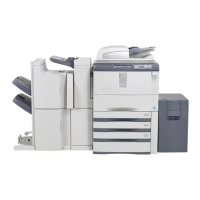
